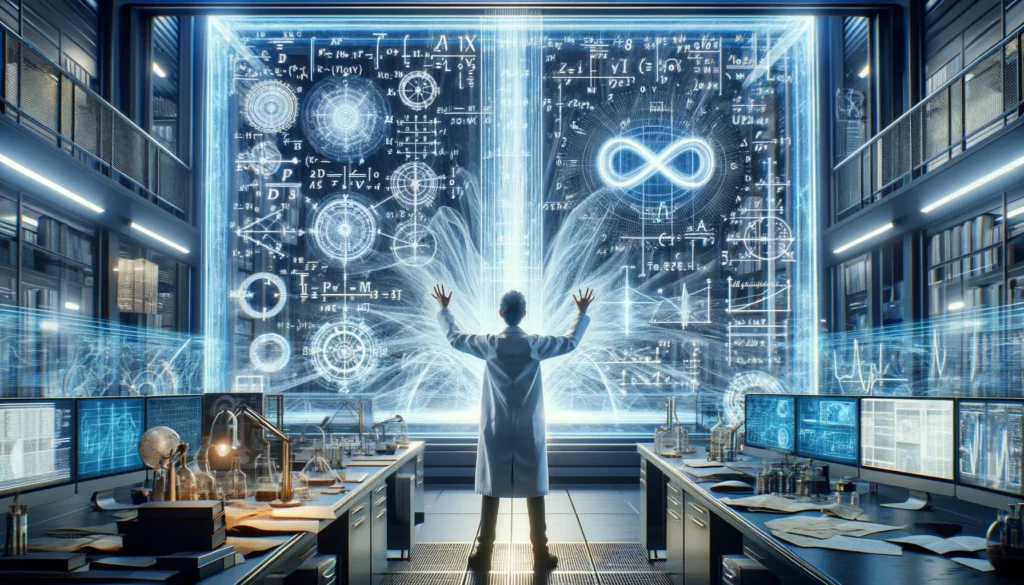The Crack in Spacetime: Uncovering the Theoretical Possibility of Time Travel
In the quiet realm of theoretical physics there stirs a profound and captivating proposal – a time machine built not on the flights of science fiction, but rooted in Einstein’s theories of gravity and spacetime – a brainchild of astrophysicist Professor Ron Mallett, spurred by his personal quest deepening into the crux of Nature’s enigmatic truths. Will humanity ever accomplish the feat of crossing unfathomable temporal dimensions, thus shifting the very foundations of our linear perspective on time?
Imbued with an unwavering determination and inspired by H.G. Wells’ ‘The Time Machine’, young Mallett found solace and a life-defining direction after the tragic demise of his beloved father. Propelled by a deep-seated longing to bridge the gap between the ‘what once was’ and ‘what is’, Mallett committed his life to decoding the mysteries of time, hoping one day to bend its unyielding course.
His fiery pursuit led him to develop an equation, a deceptively simple equation rooted in the enigmatic depths of Einstein’s theories of relativity and the intimidating event horizons of black holes. His revelation – spinning black holes that could create gravitational fields potent enough to birth time loops, a phenomenon enabling backward time travel, claiming it all hinges on ‘an intense and continuous rotating beam of light’.
Introducing us to his envisioned construction, Mallett likens the operations of his time machine to a stirring cup of coffee, where the resultant vortex replicates the spacetime-distorting effects of a spinning black hole. He suggests that this rotating laser beam, an elemental part of his machine, could potentially cause a time-warp.
Despite the encouraging theoretical underpinning, Mallett acknowledges the practical challenges that loom large, specifically the ‘galactic amounts of energy’ that the machine would potentially consume. Moreover, the scope of his time machine currently limits any time travel to only after the machine became operational. Thus, in its existing stage, the machine seems no more than a glorified one-way messaging service to the past.
Yet, Mallett’s pursuits symbolize more than just a scientific endeavor – they echo a testament of human resilience and boundless potential. Alongside his distinguished academic career, he has courageously battled the realms of theoretical impossibility, fueled by his unrelenting belief in the conceivable.
The concept of time travel, long relegated to the vibrant landscapes of sci-fi, seems a daunting propeller of skepticism. The hurdles – technological and theoretical– are vast, and the implications of meddling with past events herald a new region of ethical conundrum. Yet, the prospect being held within our grasp is such that it can’t help but captivate and inspire. It whispers to us of an era where humans may conversely navigate through time, shaping history, perhaps even altering the future.
Granted, the fruition of a real-world time-machine may still be a distant dream, peering far beyond our scientific horizons. But Mallett’s audacity shows us the true essence of scientific endeavor – daring to ask, daring to seek, and daring to conquer the unknown. His lifelong quest, rooted in a deeply personal loss, has helped to stretch our scientific discourse and redefine the boundaries of possibility.
For, ultimately, is not the drive of science underpinned by curiosity and an insatiable thirst to transcend limitations? Mallett has thus beseeched us to believe in the power of dreamers who dare to see beyond the here and now. His life reminds us that behind every scientific expedition lies a human story, a story of ambition and aspiration. Mallett’s legacy thus transcends the confines of his equation and instead, lies in the inspiration he offers – cementing his timeless influence in the annals of scientific endeavor.



